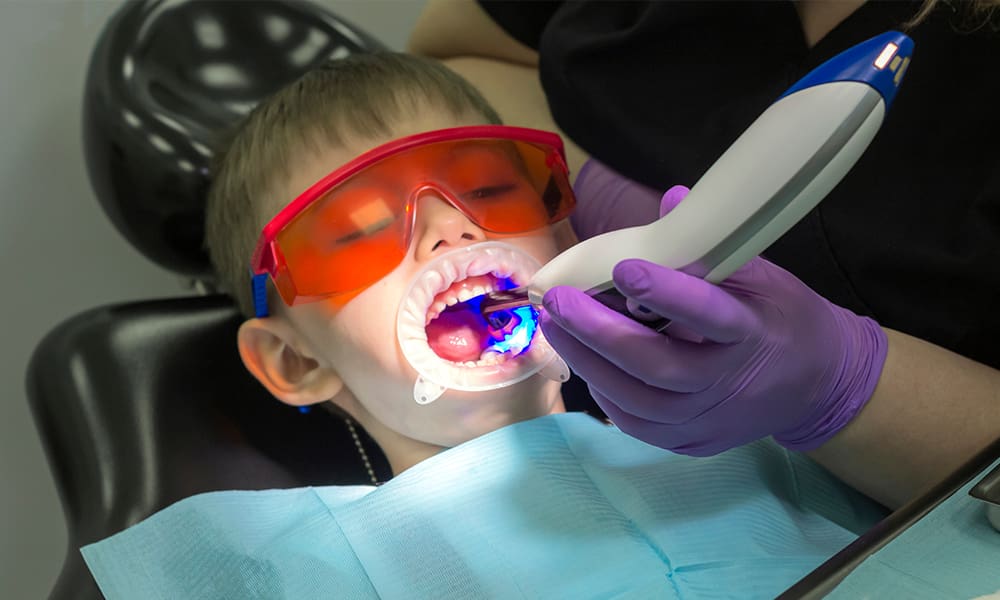Pulpotomy in Kids: What Every Parent Should Know

It can be disheartening to see your little one in pain! Toothache can be debilitating and can negatively impact your child’s routine. Pulp infections in kids require prompt detection and management, preferably through pulpotomy. As a parent, it can be concerning to learn that your child needs a pulpotomy, a dental procedure that involves removing infected pulp tissue from a tooth. However, with the right information and guidance from the Houston dentist, you can help your child feel more comfortable and prepared for the procedure.
In this article, we will explore what pulpotomy is, why it’s necessary, and what to expect during and after the procedure.
What is pulpotomy?

Pulpotomy is a dental procedure that involves removing infected pulp tissue from a tooth. The pulp is the soft tissue inside the tooth that contains blood vessels and nerves, offering the necessary nutrition to the tooth. When the pulp becomes infected, it can cause pain, abscesses, and even tooth loss. Pulpotomy is usually performed on baby teeth, but it can also be done on permanent teeth in some cases.
Why is pulpotomy necessary in kids?
Pulpotomy is necessary in kids for several reasons:
Relief from pain: Infected pulp tissue can cause significant pain and discomfort in children. Pulpotomy can help alleviate this pain and make your child feel more comfortable.
Prevention of infection spread: Infected pulp tissue can spread to other parts of the mouth and body, leading to more severe infections. Pulpotomy can help prevent this spread.
Saving the tooth: Pulpotomy can help save the infected tooth from extraction, which is especially important for baby teeth that are necessary for chewing and speaking.
Prevention of orthodontic issues: Infected teeth can lead to orthodontic issues if left untreated. Pulpotomy can help prevent these issues.
What to expect during the pulpotomy?
Pulpotomy is a simple and safe procedure when offered by a skilled pediatric dentist. It is usually painless since it is performed under local anesthesia.
During the pulpotomy procedure:
- Your child will receive anesthesia to numb the tooth and surrounding area.
- The dentist will make an access hole (access opening) in the tooth to reach the pulp. Special ultrasonic instruments are used to drill a hole into the tooth.
- The infected pulp tissue will be removed, and the area will be cleaned and shaped using ultrasonic files.
- A medicated dressing may be applied to the tooth to prevent further infection.
- A filling or crown may be placed on the tooth to seal the tooth and protect it from further infection or damage.
What to expect after the procedure?
The pulpotomy procedure takes about 20-30 minutes of 2 to 3 sessions depending on the severity of the pulp infection and the cooperation of your child.
After the procedure:
- Your child may experience some discomfort or pain, which can be managed with pain relievers.
- The tooth may be sensitive for a few days.
- Your child should avoid chewing or biting on the treated tooth until it is fully restored.
- Your child must avoid hard foods and carbonated beverages.
- Follow a soft food diet for a few days.
- Keep the mouth clean with gentle brushing and flossing.
Bottom line
Pulpotomy is a common dental procedure in kids that can help alleviate pain, prevent infection spread, save the tooth, and prevent orthodontic issues. By understanding what pulpotomy is, why it’s necessary, and what to expect during and after the procedure, you can help your child feel more comfortable and prepared. If you have any concerns or questions, be sure to discuss them with your child’s dentist. With proper care and treatment, your child can enjoy a healthy, beautiful smile for years to come.

